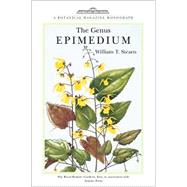
| List of Colour Paintings | |
| Preface and Acknowledgments | |
| Epimedium and Vancouveria | |
| The Family Berberidaceae | p. 1 |
| Historical Introduction | p. 3 |
| Morphology | p. 9 |
| Classification | p. 21 |
| Geographical Distribution | p. 27 |
| Cultivation of Epimedium | p. 35 |
| Taxonomic Treatment of Epimedium | p. 41 |
| Taxonomic Treatment of Vancouveria | p. 203 |
| Review of Other Herbaceous Berberidaceae | p. 211 |
| The Genus Podophyllum | p. 239 |
| References and bibliography for Epimedium and other genera of herbaceous Berberidaceae | p. 315 |
| References and bibliography for Podophyllum | p. 321 |
| Index of Scientific Names | p. 337 |
| Table of Contents provided by Blackwell. All Rights Reserved. |
The New copy of this book will include any supplemental materials advertised. Please check the title of the book to determine if it should include any access cards, study guides, lab manuals, CDs, etc.
The Used, Rental and eBook copies of this book are not guaranteed to include any supplemental materials. Typically, only the book itself is included. This is true even if the title states it includes any access cards, study guides, lab manuals, CDs, etc.